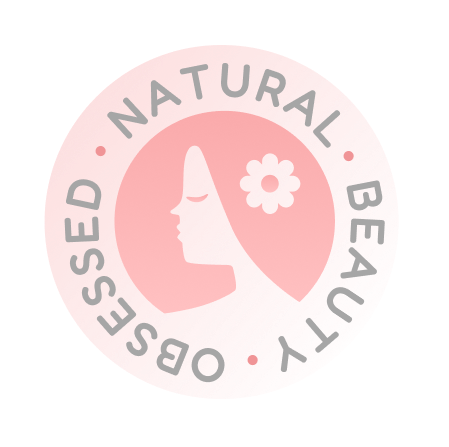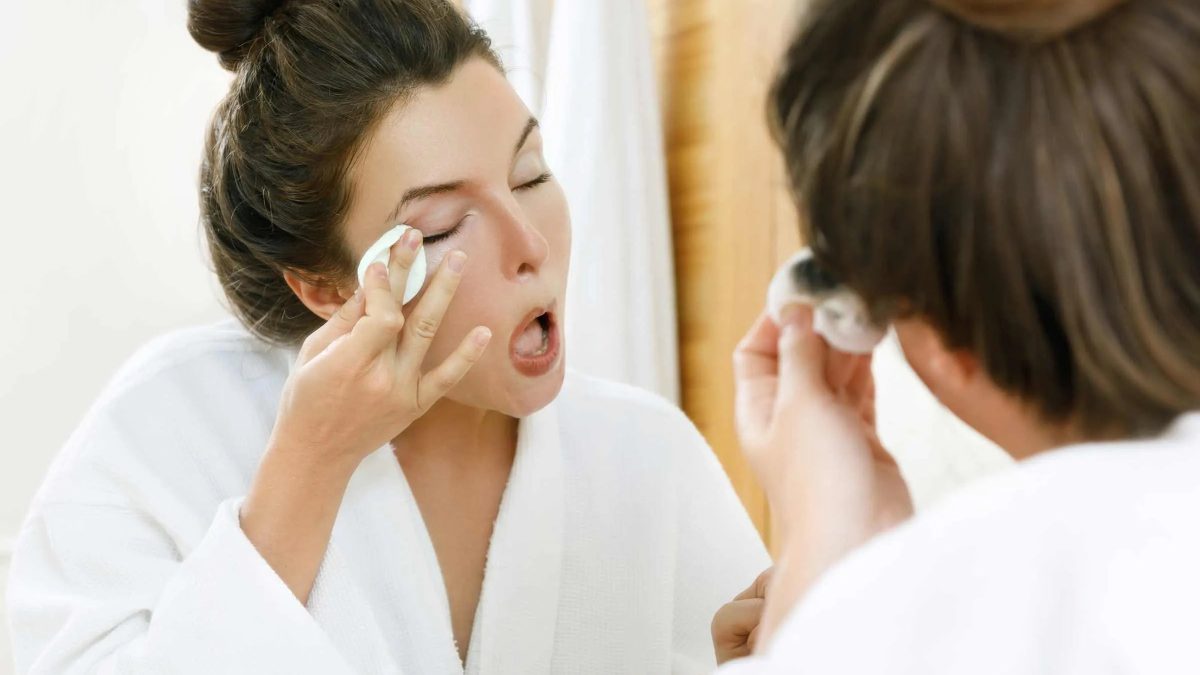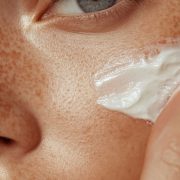Discover Science-Backed, Lash-Friendly Ways to Remove Even the Most Stubborn Mascara—Without Causing Irritation or Damaging Your Lashes
Posted on April 29, 2025 Written by: 100% PURE®

It’s the one item in our makeup bag we use without really ‘batting an eye’—mascara! From creating the illusion of bigger eyes to lengthening lashes, mascara has a length-y checklist to enhance our eyes. So, if mascara works hard all day, shouldn’t its removal be a cinch? Turns out mascara can be very stubborn.
When faced with how to wash off mascara, things can get tricky, especially with long-wear or waterproof formulas like and If you’ve ever tugged at your lashes or rubbed your eyes raw trying to remove mascara, this guide is for you!
Learn why mascara is hard to remove, which removal methods are most effective, and how to protect your lashes and the delicate skin around your eyes. With a gentle, effective solution, you can protect your delicate eye area and maintain beautiful, resilient lashes—no tugging required. There’s no time like the present to work less than your mascara remover.
Why Mascara Is So Hard to Remove
Mascara is a beauty essential that instantly defines and lifts the eyes, but removing it the wrong way can do more harm than good. Tugging, scrubbing, or skipping proper cleansing, especially for waterproof formulas, can lead to lash breakage, thinning, or even fallout over time.
While we might love the smudge-free look, dealing with a budge-proof mascara is no ‘wash in the park’.
Let’s dive into why mascara is so hard to remove.
The science behind film-forming polymers, waxes, and pigments:
While mascara’s ingredients, including film-forming polymers, waxes, and pigments, work together to coat and color lashes, its waterproof properties make them harder to remove.
#1. Film-forming polymers create a flexible, water-resistant film that covers each lash from oil and water, preventing smudging and running.
#2. Waxes contribute to the water-resistant properties of mascara and help the mascara adhere to lashes and create a waterproof coating.
#3. Pigments provide color and vibrancy.
Why waterproof mascaras are especially resistant to water and oil:
The film-forming polymers and waxes in mascara, especially in waterproof formulas, create a strong, water-resistant barrier that can be difficult to break down with just water and soap. Therefore, waterproof mascaras often require to effectively remove them.
The role of waterproofing agents and hydrophobic ingredients
Waterproof mascaras contain waterproofing agents and hydrophobic ingredients, or molecules that repel water and prevent mascara from smudging or running when exposed to moisture. These ingredients act as a barrier on the lashes, making the . This allows the mascara to stay in place even when exposed to moisture, such as sweat or tears.

Why Gentle Mascara Removal Matters
The area around the eyes, known as the periorbital region, requires special care due to its unique characteristics. The skin is thin, delicate, and unique compared to the rest of the face. As we know, mascara is not a one-size-fits-all, nor is how you remove it.
Learn why careful mascara removal is important to avoid breakage or lash loss.
Anatomy of the eye area: thin skin, minimal oil glands, and fragile lashes:
The skin is exceptionally delicate, being thinner and more fragile than the skin on the rest of your face. This thinness is due to a lower density of oil glands and collagen fibers. The constant movement and blinking of the eyes can contribute to the skin’s fragility and the vulnerability of lashes.
Common damage caused by rubbing: lash loss, wrinkles, irritation.
Rubbing your eyes frequently creates friction, which can cause breakage or lash loss, not to mention eye irritation and redness. Rubbing also strains and weakens the skin’s collagen and elastin fibers, which are proteins that give skin its structure and elasticity. Damage to these fibers can lead to sagging, wrinkles, and fine lines.
The long-term effects of poor removal habits:
Poor mascara removal habits can lead to various long-term effects on lashes. Rubbing, tugging, or pulling puts mechanical stress on lashes, causing them to snap or fall out early. Even brief rough handling can weaken the lash line over time.
Harsh removers with alcohols or synthetic ingredients strip natural oils, drying out lashes and weakening their structure. Leftover product can block follicles and stunt growth.
Improper removal also disrupts the natural lash cycle. Damage at the root can delay regrowth and lead to thinning or sparse patches.
Best Mascara Removal Techniques
When removing mascara, it’s important to choose a method that is effective yet gentle on the delicate skin around your eyes. From nourishing oils to specialized removers, you can find an option that works best for your routine.
The Soak-and-Sweep Method
Here’s a step-by-step to let your remover do the heavy lifting:
#1. Saturate a cotton pad with your chosen makeup remover. Choose an oil-based or gentle eye makeup remover suitable for your skin type and mascara formula.
#2. Press the pad onto closed eyes for 10-15 seconds to allow the makeup remover to dissolve the mascara. Let the product sit on your lashes for a few seconds to break down the makeup effectively, ensuring you don’t have to rub aggressively.
#3. Gently wipe downward, following the natural direction of your lashes, to avoid tugging or pulling. This gentle motion ensures that you’re not putting unnecessary pressure on your lashes, which can lead to breakage or irritation.
#4. Avoid rubbing, as this can cause lash loss, breakage, and irritation to the delicate skin around your eyes. Rubbing too hard can weaken your lashes over time and lead to skin redness or puffiness.
#5. Use a fresh cotton pad for each eye to prevent bacteria from transferring between eyes. This step is crucial for hygiene, particularly if you’re prone to eye infections or irritation.
Recommended Products:
: This eyeliner pencil delivers rich pigmentation with a smooth, creamy texture that glides effortlessly along the lash line.
: This pressed powder eye shadow is colored with vitamin-rich fruit pigments and responsibly sourced mica. It offers a versatile range of matte, metallic, and shimmer shades.
The Oil-Based Method
Oil-Based Makeup Removers:
This oil-based method involves using—you guessed it—oil-based makeup removers. These removers are effective at breaking down even the most stubborn mascaras, including waterproof formulas.
Why jojoba oil for skin mimics skin’s natural sebum:
due to its chemical composition, which closely resembles the sebum (natural oil) produced by human skin. This similarity allows it to effectively hydrate and balance skin without leaving a greasy residue.
How to gently dissolve stubborn mascara and eyeliner:
are formulated to dissolve makeup without stripping the skin. They often leave the delicate eye area feeling hydrated. These work by bonding to the oils in mascara, gently lifting them away while nourishing the skin.
Follow-up cleansing with Blood Orange Cleansing Balm:
The is a rich, citrus-infused balm made with degreasing blood orange to melt away makeup, plus skin-nourishing coconut and olive oils to sweep away even the most stubborn makeup, debris, and impurities.
The Steam-Assist Method
The steam-assist method involves using a facial steamer or a pot of heated water, and placing a towel over the head and shoulders to trap the steam and ensure it reaches the face. The recommended distance is about 10 inches, but you can adjust based on your comfort level. Consider starting with your face further away and gradually lowering it as you get used to the warmth.
How to safely use facial steam to soften mascara polymers:
To safely soften mascara polymers using facial steam, gently position your face near the steam, ensuring the towel is securely draped to trap the moisture. Avoid getting too close to the water source to prevent burns. Keep your face away from the steam while it heats up. Steaming for 5-10 minutes can help soften mascara polymers, but adjust the time based on your skin’s sensitivity and the steam’s temperature.
Pairing with oil or micellar water for gentle removal:
To gently remove mascara, you can steam your face to soften the product or use a combination of or micellar water with gentle swiping. Micellar water is effective for non-waterproof mascara, while oil-based removers or balms are best for waterproof formulas
Try: – This gentle yet powerful micellar water is infused with rose hydrosol, helping to remove mascara while soothing and refreshing the skin.
Precautions for sensitive or reactive skin:
If you’re using the steam-assist method with or without essential oil or micellar water to remove mascara, use caution if you have sensitive, dry, or reactive skin, or certain skin conditions like rosacea, eczema, or seborrheic dermatitis.
If you have dry skin, it’s possible that too much facial steaming will exacerbate dryness. Too much water and steam can strip your skin of natural oils, contributing to dryness and irritation. Finally, because facial steaming dilates your blood vessels, it can cause excessive redness, particularly for people with sensitive skin.
The Micellar Water Method
The micellar water method for removing mascara involves using micellar water, a cleansing liquid containing small oil molecules, to gently dissolve and lift mascara from your lashes and eyelids. This method is often gentler on the skin and lashes compared to traditional rubbing or wiping.
How micelles attract both oil and water-based particles:
Micelles attract oil and water-based particles because they are amphiphilic, meaning they have both a hydrophilic (water-loving) and a lipophilic (oil-loving) end. The hydrophilic head of the micelle is attracted to water, while the lipophilic tail is attracted to oil and other non-polar substances. This dual affinity allows micelles to surround and encapsulate both types of impurities, making them easy to remove from the skin.
Using Rose Micellar Cleansing Water with minimal effort:
Micelles bond with these impurities like dirt, oil, and makeup, and carry them off the skin as their colloid counterpart (water) rinses them away. Micelles are more gentle than chemical surfactants, which can strip and dry your skin. These impressive little molecules are small enough to grab the tiniest bits of debris, including mascara, while providing ample moisturization with minimal effort.
Essentially, deeply cleanse, hydrate, and moisturize – all while removing mascara with minimal effort. That’s precisely how we formulated the . This ultra-soothing micellar formulation is designed to feel mild yet work effectively, with calming florals and three ultra-quenching types of water.
Why it’s perfect for daily, non-waterproof wear:
For lighter wear or sensitive eyes, micellar water is a must-have and ideal for daily use, removing non-waterproof mascara. It gently lifts away pigment without irritation or stinging.
This method is also good for removing waterproof mascara, as the micellar water helps break down the silicone-based formulas. It’s also recommended to be gentle and avoid harsh rubbing to prevent lash damage.
Product Recommendations from 100% PURE
Proper mascara removal isn’t just about getting rid of eye makeup—it’s a crucial step in protecting the health of your lashes. Here are the most effective products for taking off mascara gently and thoroughly, no matter what type you’re wearing.
: This nourishing balm is made with degreasing blood orange to melt away mascara while coconut and olive oils sweep away even the most stubborn makeup, debris, and impurities. It’s a perfect choice for daily use and ideal for melting away long-wear mascara.
: Perfect for gentle, daily use:
: This odor-free, latex-free makeup sponge features a versatile design. Use damp to help press the product in or gently wipe away residue.
Bonus tip: Always remove makeup before cleansing with a gentle formula like the for a more effective nighttime routine.

Special Considerations for Washing Off Mascara
Properly removing mascara protects your eyelashes, reduces irritation, and promotes skin health. Using the right remover and technique prevents lash breakage and dryness. natural, nourishing products provide an effective yet gentle solution to remove mascara while caring for your lashes and delicate skin.
Check out these important tips for different lash and eye needs:
If You Wear Contact Lenses
When to remove lenses:
To safely wash off mascara when wearing contact lenses, you should remove your contact lenses before using any eye makeup remover. This prevents mascara and makeup remover from potentially getting onto or into your eyes while you have your lenses in, which can cause irritation or even infection.
Which removers to avoid:
Contact lens wearers should avoid oil-based and waterproof mascara removers as they can irritate eyes and potentially stain or damage contact lenses. Water-based, oil-free, and hypoallergenic removers are generally recommended.
Proper rinsing techniques before reinserting:
Put the contact lenses in the special case with fresh solution. Never mix fresh solution with old or used solution. Wait 4 to 6 hours (as directed) before wearing lenses. Avoid rinsing lenses with hydrogen peroxide directly before insertion to prevent discomfort
If You Have Sensitive Eyes
Ingredients to avoid: alcohols, fragrances, preservatives:
and synthetic additives that irritate eyes and damage lashes. Some long-term mascara formulas can also cause . If you Have sensitive eyes, avoid mascara formulas with drying alcohols, fragrances, synthetic pigments, and preservatives.
Choosing soothing, ophthalmologist-tested products:
Choosing soothing, ophthalmologist-tested mascara is important because it minimizes the risk of irritation, allergic reactions, and other eye problems, especially for those with sensitive eyes or who wear contact lenses. These mascaras are formulated with gentle, hypoallergenic ingredients and undergo rigorous testing to ensure they are safe for use around the delicate eye area.
The benefits of plant-based oils like jojoba:
Opt for natural and organic mascara options to avoid the harmful effects of synthetic pigments. Look for natural and non-toxic ingredients, such as plant-based oils and waxes. There are many benefits of jojoba oil for skin, including it being hypoallergenic, making it safe for use around the delicate eye area. Natural options are gentle on your eyes, providing a more comfortable application experience. If you prefer a vegan option, make sure the mascara is free of animal-derived ingredients.
If You Have Lash Extensions
Eyelash extensions offer several benefits, including enhanced appearance, time-saving convenience, and customizable beauty options. They can make your eyes look bigger and more open, require no mascara application, and last several weeks with proper care. Although eyelash extensions are relatively low maintenance, it’s important to know how to care for them.
Why oil-based removers are a no-go:
Oil-based mascara removers are harmful to lash extensions because the oil can dissolve the adhesive used to bond them to your natural lashes. This weakens the bond, causing the extensions to fall out prematurely, requiring more frequent refills and potentially causing damage to your natural lashes.
What to use instead:
To protect your extensions, it’s crucial to use oil-free makeup removers and cleansers, as well as avoid oil-based mascaras.
How to gently cleanse without disrupting the adhesive:
To gently cleanse lash extensions without disrupting the adhesive, use a lash-specific cleanser and a soft brush, avoiding oil-based products that can weaken the adhesive. A lash cleanser can be applied with a brush or finger and gently massaged along the lash line, ensuring the product is rinsed away thoroughly.
Common Mascara Removal Mistakes
If you’ve wondered, “How does mascara make your eyelashes longer?” and knew the answer had to do with formula and application, you’ve got a visionary approach! We’ve covered some burning questions like “How to wash off mascara without rubbing your eyes raw” and “How to remove mascara without causing irritation or damaging your lashes.”
However, what if you’re armed with this knowledge and correct removal tips, and your mascara still looks like a miss-cara? You might be making some mascara mistakes – but don’t worry – we’ll cover how to fix them.
Tugging or rubbing aggressively:
Not all eye makeup removers are created equal. Many conventional mascara removers can contain harsh ingredients, or the actions to remove mascara can cause damage to the lashes.
When it comes to how to take off mascara, avoid harsh scrubbing, rubbing, tugging, or using products containing alcohol, fragrance, or petroleum-based ingredients, as these can irritate the delicate skin around the eyes and damage eyelashes.
Use gentle, oil-based cleansers to remove mascara and protect lash health. Oil-based cleansers are particularly good at removing makeup, including waterproof mascara, because they are designed to break down the oil-based formulas that make up many makeup products.
Using cotton pads that shed:
Avoid using cotton pads. They tend to shed, which can irritate the eye area, damage lash extension adhesive, or tangle around lashes.
Applying hot water or harsh scrubs:
Avoid using hot water or harsh scrubs to remove mascara because they can damage the delicate skin around your eyes and potentially damage your lashes. Hot water can dry out the skin, and scrubbing can irritate and even lead to wrinkles. Harsh scrubs can strip the skin’s natural oils and cause irritation.
Forgetting to moisturize the eye area post-removal:
After cleansing, show your lashes some love. Apply a conditioning oil like castor or jojoba to nourish and strengthen them overnight. Take mascara breaks once or twice weekly to avoid over-stressing your lash line. Use a clean spoolie to brush lashes gently, which also helps distribute natural oils. And don’t forget—hydration and a nutrient-rich diet go a long way in supporting lash and overall hair health.
Conclusion
The key to safe, effective mascara removal lies in understanding your products and using the right techniques. Whether you’re removing your after a long day or clearing away your before bed, gentleness is everything. Removing mascara gently protects your eyelashes, reduces irritation, and promotes skin health.
Incorporating the right remover, tools, and ingredients—like , , plant-based oils like for skin and lashes, or a —can preserve the health of your lashes, protect your skin, and make your nightly routine a soothing ritual instead of a struggle.
Mascara doesn’t have to be harmful for your eyes – in fact, it shouldn’t be. Find a brand whose values align with yours (hint, hint), so you can rest assured that you’re using safe, quality ingredients. natural, nourishing products provide an effective yet gentle solution to remove mascara while caring for your lashes and delicate skin.
With a gentle, effective solution, you can protect your delicate eye area and maintain beautiful, resilient lashes—no tugging required. There’s no time like the present to work less than your mascara remover!
FAQs:
#1. What’s the safest way to remove waterproof mascara?
The safest way is to use an oil-based or bi-phase remover. These break down waterproof mascara without irritating the skin or damaging lashes. Gently press the remover onto closed eyes before wiping in the direction of your lashes.
#2. Can I use coconut or jojoba oil to remove mascara?
Yes, coconut oil and jojoba oil for skin and lashes are effective and gentle for removing mascara. They naturally dissolve makeup while also nourishing your lashes. Simply warm a small amount between your fingers, apply it to your lashes, and gently wipe away with a cotton pad.
#3. How do I remove mascara without losing lashes?
To avoid lash loss, be gentle. Use soft cotton pads or microfiber cloths, and don’t rub or tug. Saturate your remover, press gently against your lashes, and wipe in the direction of hair growth. Always use fresh pads to avoid friction or irritation.
#4. How do I remove mascara without damaging my lashes?
Use a gentle makeup remover, press it onto closed eyes for a few seconds, and wipe downward in the direction of your lashes. Avoid rubbing or pulling to prevent lash breakage.
#5. What should I apply after removing mascara to keep my lashes healthy?
Apply nourishing oils like castor or jojoba oil for skin to strengthen lashes. You can also use a hydrating eye cream to keep the delicate skin around your eyes moisturized.




